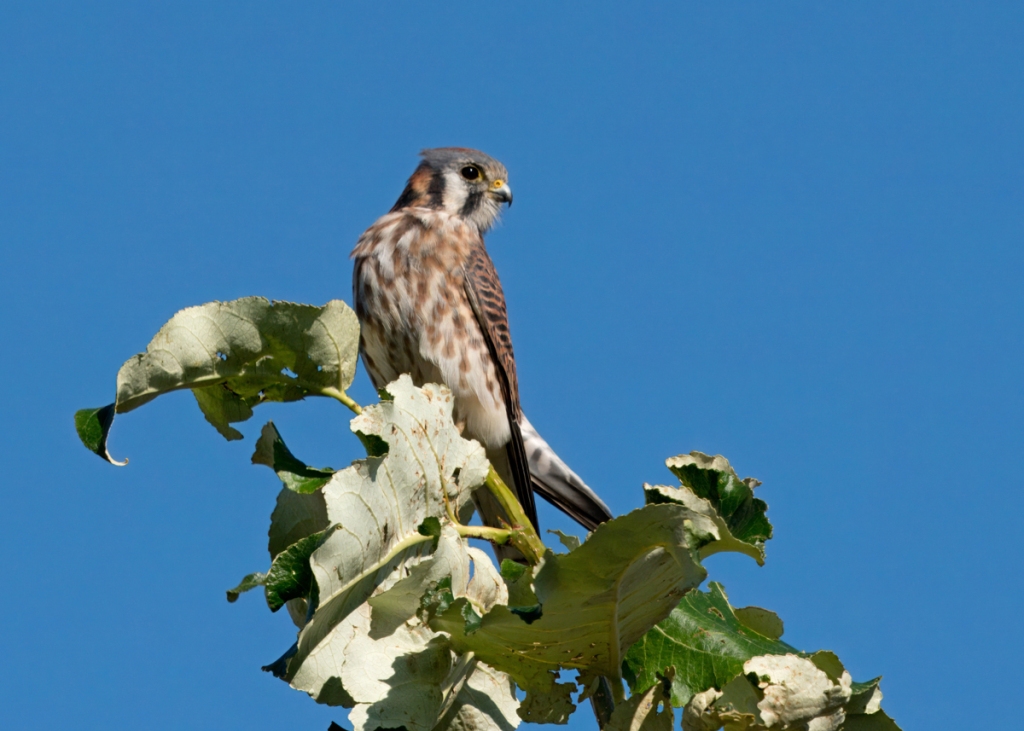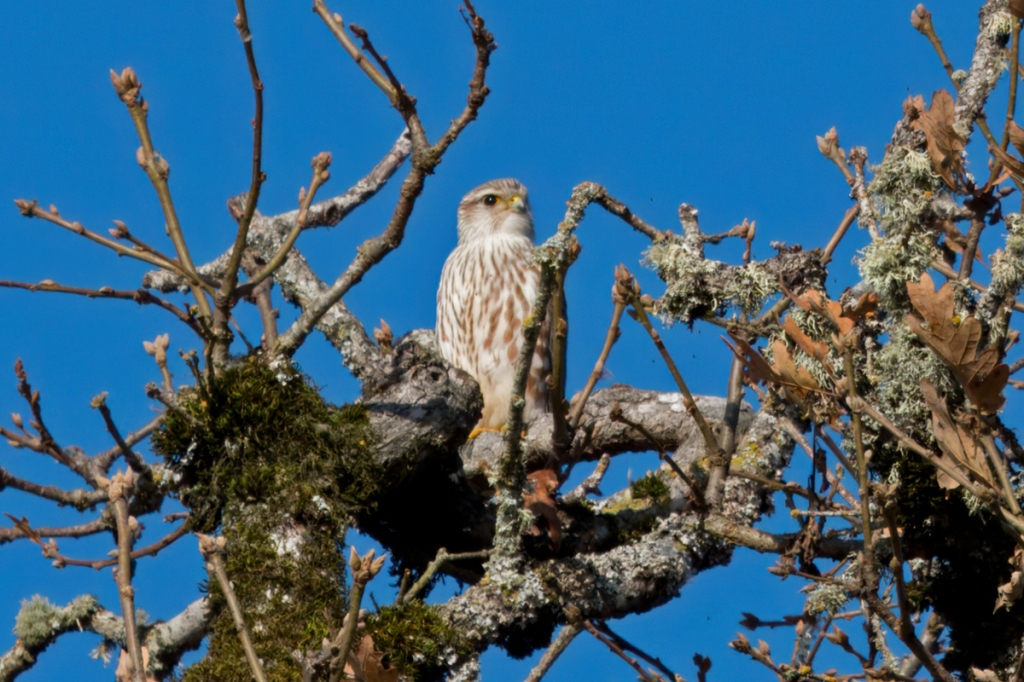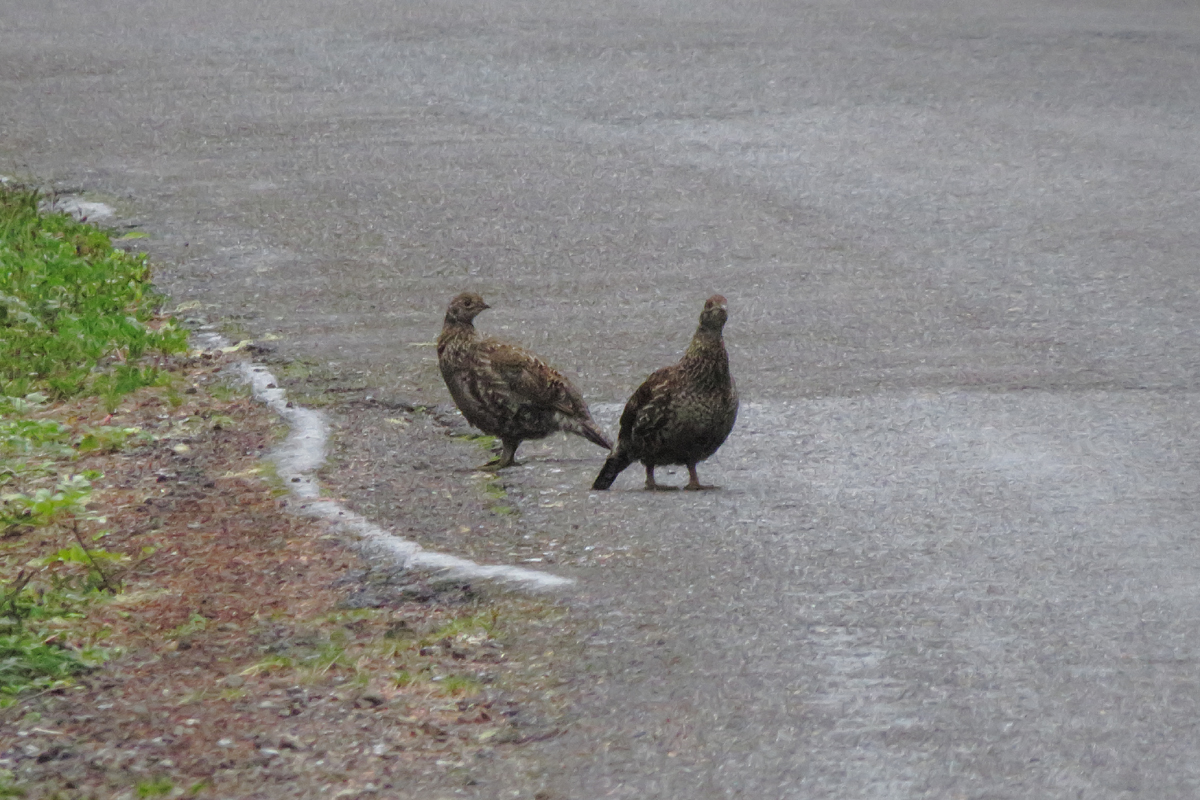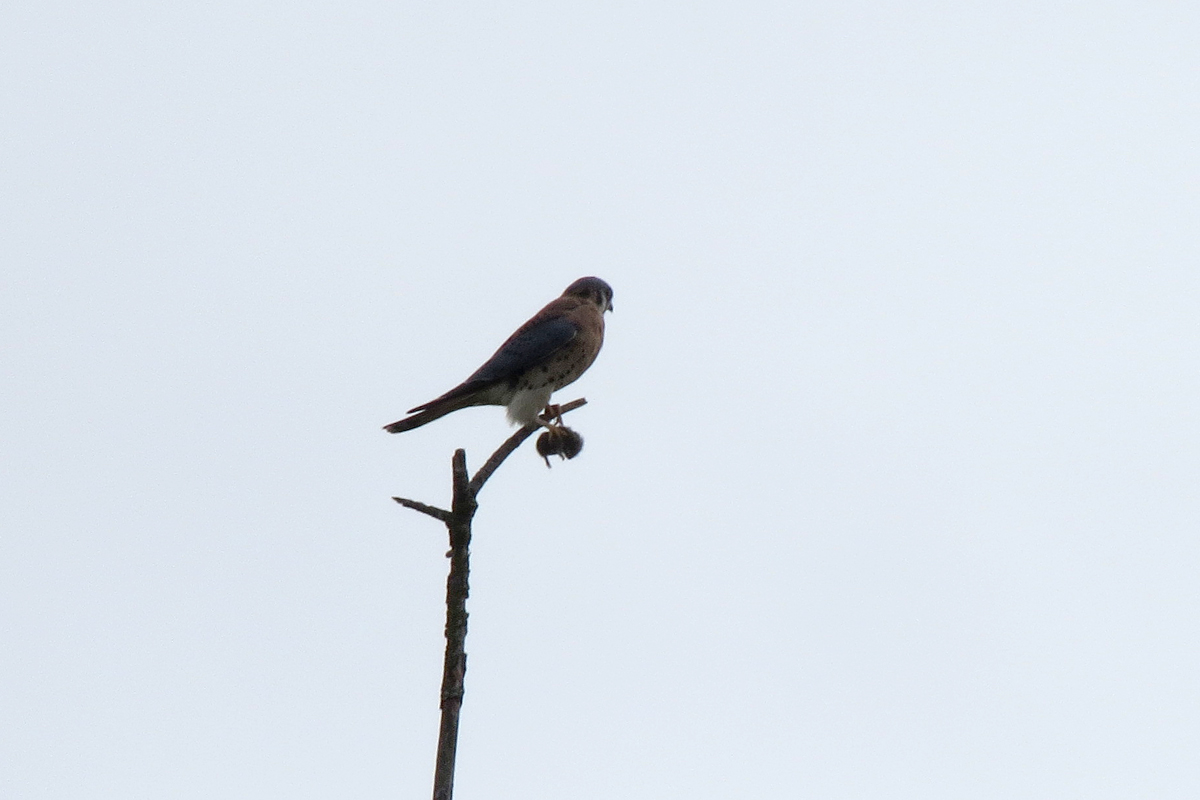Trees may get all the credit for creating pretty colors in autumn, but I think the birds do their part.










Happy autumn.

Trees may get all the credit for creating pretty colors in autumn, but I think the birds do their part.










Happy autumn.

After a very long dry summer, autumn has finally arrived. While we don’t get the extensive fall colors found in eastern forests, the red Poison Oak highlights the eyes on this Spotted Towhee.

This very ragged Bushtit was found at Wapato Lake NWR, which has finally opened up to birders after a long wait. The refuge will be closed to non-hunters from December-February, but should offer some great birding when it is open.

American Pipits are common migrants this time of year on mudflats and other open habitats.

Male American Kestrel

This American Crow was actively fishing in a tide pool along the Columbia River. I don’t normally think of crows as fish-eaters, but they take advantage of whatever food source is available.

There are still a few American White Pelicans around. They will be gone soon.

Brush Rabbit, blending in with the fall colors

Pacific Tree Frog on a maple leaf. These frogs are very common, but they seldom perch out in the open.

This Black-tailed Deer was just off the path at Cooper Mountain Nature Park.
Happy Autumn
In mid to late summer, when conditions are very hot and dry in Oregon, most of the wildlife activity is found near wetlands, at least until they dry up as well. Here are a few images from various wetlands in the Portland area this summer.










Happy Summer
 I spent a foggy morning at Jackson Bottom Wetland Reserve. This Great Egret was blending in with the foggy background at Pintail Pond.
I spent a foggy morning at Jackson Bottom Wetland Reserve. This Great Egret was blending in with the foggy background at Pintail Pond.
 Belted Kingfishers are almost always distant subjects for my photos. They are quite skittish.
Belted Kingfishers are almost always distant subjects for my photos. They are quite skittish.
 The Coyote Hill Trail is a nice loop around a weedy field that can be good for upland species, like this American Kestrel.
The Coyote Hill Trail is a nice loop around a weedy field that can be good for upland species, like this American Kestrel.
 Northern Pintail was the most abundant species of waterfowl on this day.
Northern Pintail was the most abundant species of waterfowl on this day.
 The north end of the reserve hosted a flock of 20 Tundra Swans, always a nice find.
The north end of the reserve hosted a flock of 20 Tundra Swans, always a nice find.
There weren’t any great rarities on this trip. But there were a lot of good birds and a nice four-mile hike without any rain – a great trip for December.
Happy Autumn
I had the opportunity to guide a lovely couple from Florida on a trip to Mt. Hood National Forest. The weather was not great, with dreary conditions at lower elevations and driving rain at Timberline Lodge. But we did manage to find some great birds.
Our first stop was Wildwood Recreation Site for riparian and lower elevation species. The first bird of the day was a Bald Eagle flying over the river; a nice start. Our main target was American Dipper, and the footbridge over the Salmon River is a pretty reliable spot.

One of two American Dippers we spotted in the early morning gloom
We next tried to bird around Timberline Lodge for high-elevation species, but the rain and wind made birding impossible. So we headed down to Little Crater Lake.
 Birding in the forests this time of year can be deadly slow, but we did encounter two groups of Canada Jays. Even when you don’t have food, these birds will come in close to check you out.
Birding in the forests this time of year can be deadly slow, but we did encounter two groups of Canada Jays. Even when you don’t have food, these birds will come in close to check you out.
 On the way back from Little Crater Lake, we came across a group of six Sooty Grouse. This was a lifer for my client, and the largest “flock” that I have seen.
On the way back from Little Crater Lake, we came across a group of six Sooty Grouse. This was a lifer for my client, and the largest “flock” that I have seen.
 After a second trip up to Timberline proved equally unbirdable, we decided to head back toward Portland to look for sparrows and other grassland species at Powell Butte Nature Park. We found a few sparrows, but the highlight of this spot was the group of three Black-tailed Deer feeding on fallen apples.
After a second trip up to Timberline proved equally unbirdable, we decided to head back toward Portland to look for sparrows and other grassland species at Powell Butte Nature Park. We found a few sparrows, but the highlight of this spot was the group of three Black-tailed Deer feeding on fallen apples.


 One reason songbirds may have been so hard to come by at this site was the pair a American Kestrels (female shown here) that were actively hunting. A Sharp-shinned Hawk was also lurking about, so the sparrows may have been keeping a low profile.
One reason songbirds may have been so hard to come by at this site was the pair a American Kestrels (female shown here) that were actively hunting. A Sharp-shinned Hawk was also lurking about, so the sparrows may have been keeping a low profile.
Some nice birds and excellent company made for a good day, despite the dreary conditions.
Happy Autumn
 Fernhill Wetlands is the place to be in autumn. Even after the extensive wetland renovations that have taken place, resulting in less open water, the Cackling Geese still congregate here by the thousands.
Fernhill Wetlands is the place to be in autumn. Even after the extensive wetland renovations that have taken place, resulting in less open water, the Cackling Geese still congregate here by the thousands.
 This Great Egret was catching the sunshine on the top of a tree.
This Great Egret was catching the sunshine on the top of a tree.
 Northern Pintail. I don’t often see them hanging out on dry ground.
Northern Pintail. I don’t often see them hanging out on dry ground.
 Killdeer and Green-winged Teal
Killdeer and Green-winged Teal
 Greater White-fronted Geese migrate over the Willamette Valley in large numbers, but not many touch down, so it is always nice to see some on the ground.
Greater White-fronted Geese migrate over the Willamette Valley in large numbers, but not many touch down, so it is always nice to see some on the ground.
 Fernhill Lake is about half of its original size, but it is still big enough to attract divers, like this Horned Grebe.
Fernhill Lake is about half of its original size, but it is still big enough to attract divers, like this Horned Grebe.
Waterfowl diversity continues to increase, and winter sparrow flocks should pick us soon. I’m looking forward to watching the show, assuming the Bundys don’t move in.
I hadn’t been to Powell Butte Nature Park in east Portland since they finished renovations. They had been working on one of the water system reservoirs and have added more parking, a visitor center, and new trail markers and maps. The targets of this visit were several Mountain Bluebirds that had been hanging out for a while.
 I found a male and two three females, all of whom kept their distance.
I found a male and two three females, all of whom kept their distance.
 There was a big wave of Yellow-rumped Warblers in the park. All that I got a good look at were Audubon’s race, and most were male.
There was a big wave of Yellow-rumped Warblers in the park. All that I got a good look at were Audubon’s race, and most were male.
 Another regional rarity that has been hanging out at Powell Butte is this Say’s Phoebe. This bird was active and vocal, but also kept his distance.
Another regional rarity that has been hanging out at Powell Butte is this Say’s Phoebe. This bird was active and vocal, but also kept his distance.
 The open meadows are attractive to Northern Harriers (not photogenic) and American Kestrels (slightly more cooperative). The raptors can make it harder to study the grassland songbirds, but this site is still very productive. There was one singing Savannah Sparrow while I was there. In a few weeks, that bird will be joined by more Savannahs and Lazuli Buntings.
The open meadows are attractive to Northern Harriers (not photogenic) and American Kestrels (slightly more cooperative). The raptors can make it harder to study the grassland songbirds, but this site is still very productive. There was one singing Savannah Sparrow while I was there. In a few weeks, that bird will be joined by more Savannahs and Lazuli Buntings.
Here are a few photos from recent ramblings.
 After delivering some books to Tualatin River NWR, I took a quick walk on the path that leads through some newly planted oaks and along the river. This male American Kestrel had just captured a shrew.
After delivering some books to Tualatin River NWR, I took a quick walk on the path that leads through some newly planted oaks and along the river. This male American Kestrel had just captured a shrew.
 These Western Canada Geese (and the Common Merganser on the log in the foreground) were napping at the Sandy River Delta.
These Western Canada Geese (and the Common Merganser on the log in the foreground) were napping at the Sandy River Delta.
 The Beavers are really enjoying the young trees at Sandy River Delta.
The Beavers are really enjoying the young trees at Sandy River Delta.
 This old American Robin nest was tucked into a crevice of a tree.
This old American Robin nest was tucked into a crevice of a tree.
 Pileated Woodpeckers are fairly easy to find at Sandy River Delta. This one was perfectly hidden behind a branch.
Pileated Woodpeckers are fairly easy to find at Sandy River Delta. This one was perfectly hidden behind a branch.
 Peregrine Falcon, Sandy River Delta
Peregrine Falcon, Sandy River Delta
 This Hermit Thrush was chasing another outside my bedroom window early in the morning.
This Hermit Thrush was chasing another outside my bedroom window early in the morning.
Nala and I went out to Dawson Creek Park in Hillsboro to look for a Rusty Blackbird reported the day before. This site, a private park associated with the office park behind the public library, is a manicured park with paved trails around a series of small ponds. It attracts good numbers of waterfowl in winter, some migrant songbirds, and a few resident Acorn Woodpeckers.
 Wood Ducks are common in the ponds.
Wood Ducks are common in the ponds.
 Some of the males were displaying to the females, swimming around slowly with their heads lowered.
Some of the males were displaying to the females, swimming around slowly with their heads lowered.
 Such a handsome boy
Such a handsome boy
 Cackling Geese were grazing on the lawns.
Cackling Geese were grazing on the lawns.
 American Kestrel
American Kestrel
 The same bird later, with lunch
The same bird later, with lunch
 There were just a few American Wigeons in one of the ponds. I expect their numbers to increase at this site within the next couple of weeks.
There were just a few American Wigeons in one of the ponds. I expect their numbers to increase at this site within the next couple of weeks.

 Just as I was finishing my tour of the site, I finally saw my target bird (the Rusty Blackbird, not the Mallard). It would have been nice to get some full-frame photos like some other birders were able to get about three minutes earlier, but I was glad to add this species to my Oregon list. There are less than 20 accepted records of this species in the state. Rusty Blackbirds have experienced drastic population declines in the last few decades.
Just as I was finishing my tour of the site, I finally saw my target bird (the Rusty Blackbird, not the Mallard). It would have been nice to get some full-frame photos like some other birders were able to get about three minutes earlier, but I was glad to add this species to my Oregon list. There are less than 20 accepted records of this species in the state. Rusty Blackbirds have experienced drastic population declines in the last few decades.
 I led a tour of Fernhill Wetlands for the Birds and Brew Festival. Since there were about 50 people in the group, including many who didn’t have optics, we concentrated on the “charismatic mega-fauna,” like these American White Pelicans.
I led a tour of Fernhill Wetlands for the Birds and Brew Festival. Since there were about 50 people in the group, including many who didn’t have optics, we concentrated on the “charismatic mega-fauna,” like these American White Pelicans.
A Great Egret and a Great Blue Heron were looking all artsy with their reflections.
 This distant American Kestrel was showing off his colors.
This distant American Kestrel was showing off his colors.
 After the group dispersed, I took another lap around the lake so I could check out the smaller birds. Along with five species of sparrow, there were lots of Yellow-rumped Warblers moving around.
After the group dispersed, I took another lap around the lake so I could check out the smaller birds. Along with five species of sparrow, there were lots of Yellow-rumped Warblers moving around.